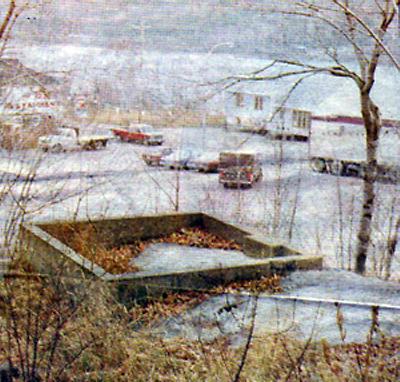 |
February 5, 2010Earthquakes in Perspective
|
With the Haitian earthquake in the news a brief history of
earthquakes in Northern Ontario may be of interest. The great rock slabs that
make up the earth’s upper layer slide and collide regularly. There are recorded
tremors every day but few are noticed by humans. About 80% happen along the rim
of the Pacific Ocean. Earthquakes are rated by the strength and duration of the
waves on what is called a Richter Scale. On the Richter Scale 3 to 5 is felt
activity, 5 to 7 is strong and 7 to 8+ is major. On average a magnitude 8 quake
strikes somewhere on every year. Upwards of 10,000 people are killed annually in
quakes, mud slides, fires, floods and tsunamis. The Haitian earthquake on
January 12th was a 7.0 magnitude and the January 20^th a 5.9. The fragile
buildings and close population caused severe damage and thousands of deaths.
 |
Devastation caused by Haitian earthquake |
Canada’s Largest
On June 23rd 1946 a 7.3 earthquake hit Vancouver Island.
The town of Courtenay was impacted and tremors were felt in Prince Rupert B.C.
and as far south as Portland Oregon. With a relatively small population only 2
people were killed and damage was minimal.. Over 75% of chimneys were damaged.
Tall buildings in Vancouver and Victoria swayed .
Northern Ontario
The following earthquakes were reported in recent years in
Northern Ontario. 2006 – Kapuskasing 3.4; Sudbury 4.1; Cochrane 4.2; and in 2009
near Kirkland Lake 3.4.
As mentioned in my recent Millennium New Years Eve article an earthquake started
in Temiscaming Quebec and rolled into Quebec and shook North Bay on New Years
Day in 2000. It was 5.2 on the Richter Scale. It lasted about 10 seconds. There
were 3 small aftershocks and houses shook and most people got up and put their
lights on. The OPP phones rang continuously. Eighty percent of the chimneys were
damaged in Temiscaming. Reports indicate that there have been 26 earthquakes
since 1914.
The Big One
I have a 1989 copy of the Nugget’s Weekender where Gord
McCullock reported on a powerful earthquake in our area in 1935. The quake,
centred in Temiscaming Quebec, happened on November 1, All Saints’ Day at 1:04
a.m. just after the Halloween dust had settled. About 200km below the earth’s
surface the earth moved. The centre was on the north end of Tee Lake 6 miles
north of Temiscaming. The tremors were felt from the Atlantic to Winnipeg and
from the Carolinas to the Arctic. Considering the scale of the quake, damage was
minimal. In North Bay chimneys toppled crashing verandas, beds shook and dishes
crashed.
There were aftershocks throughout the night and for months afterwards. Some
buildings shifted and water pipes were broken. Many left their homes
temporarily. Evacuation drills were run in some schools.
 |
One of the bases of a seismograph used to monitor
vibrations after the 1935 earthquake in Temiscaming Quebec.
|
Seismograph Stations
For about a year several seismographic stations were
operated around Temiscaming to monitor earth movements. The delicate instruments
were placed on concrete foundations set on rock outcroppings. Reports were
forwarded and analyzed. For years hunters were surprised when they ran across
these abandoned foundations. Frances (Mac) Macleod, a technician at the Canadian
International Paper Co., had a unit placed near his home (see photo). He changed
the film every day for a year and mailed them to Ottawa.
1975 Event
Forty years later in December 1975 a 4.2 quake centered on
Lake Kipawa 35km NW of Temiscaming took place. Residents said it was like a
passing 18 wheeler and windows and dishes rattled. The tremor started about
15-20 miles below the surface.
Emergency Preparedness
There are plans for dealing with disasters in place now in
most communities that provide for emergency aid, food, etc. That would apply to
a quake. Another quake is clearly a possibility in our lifetime along with the
possibility of disasters like windstorms, ice storms ,fire and plane crashes.
Don’t be scared, be prepared!
Heritage Perspective Home Page
| 
![]() Past
Forward is now on Facebook "LIKE" us to keep in touch
Past
Forward is now on Facebook "LIKE" us to keep in touch